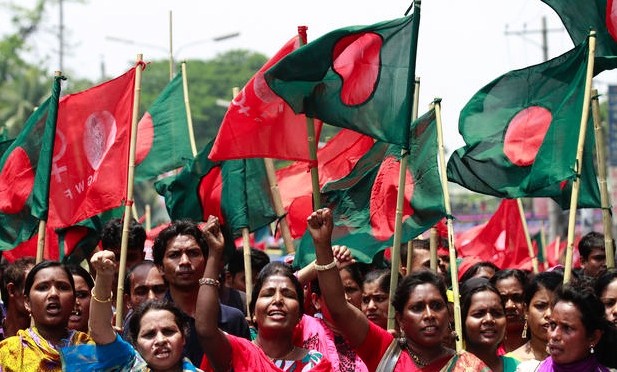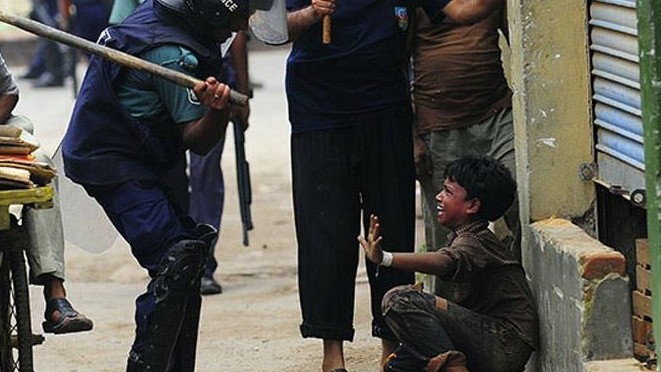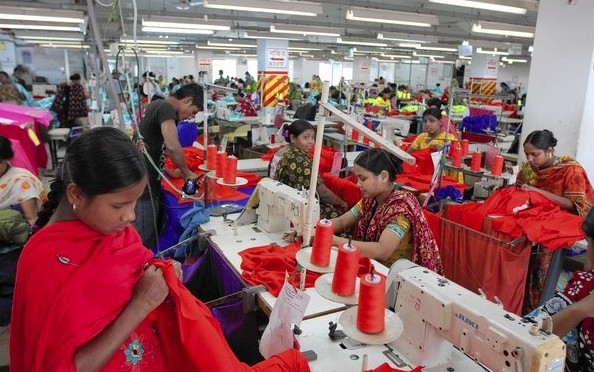There are so many remarkable photos from around the world of the International Labor Day protests today. They were from Germany, France, Sri Lanka, Indonesia, Cuba, Croatia, Russia, Greece, Spain, Cambodia, Bangladesh, Italy, Iraq. Protestors demanded higher wages, safety standards, & worker’s rights. Apparently riot cops don’t have the same appreciation as the rest of us for working people standing in solidarity since they came not to join protests but to attack them with truncheons, tear gas, & water cannons in several countries, particularly in Turkey, Cambodia, & Italy.
In Istanbul workers defied a ban on May Day protests & against gathering in Taksim Square, the venue of last summer’s uprising, by coming out in force. Police violence was extreme, especially the excessive use of tear gas. Many were injured. Cambodia also banned protests but sweatshop workers leading the protests were also out in force & sustained vicious beatings from riot cops.
It should be frankly acknowledged (& not without a certain amount of glee) that in some places riot cops appear to have gotten as good as they gave. Turkish protestors responded to police provocation with petrol bombs, Italian workers matched truncheon for truncheon, Cambodians held their ground despite the attacks. Workers from one labor organization in Manila danced around a burning effigy of Philippine president Aquino. (We’re gonna have to get those Filipino activists over here to teach us a thing or two.) There are no photos so far, as there have been in the past, of Greek workers matching police violence with paint bombs but we hope they’re only delayed in transmission.
Perhaps the most significant thing to note is the role of sweatshop workers who led the protests in Bangladesh & Cambodia. We hope retailers who think of sweatshop workers like oxen to be beaten & driven are terrified by the tsunami coming at them.
There are so many wonderful photos from today but this one of garment workers & others in Dhaka, Bangladesh demanding compensation for survivors of the Rana Plaza collapse & calling for workplace safety is one of the most impressive. We can well understand the political opposition to women’s rights when we see them playing such leading roles in social struggles of every kind all over this planet. The future looks brighter already.
US workers appear to be a hopeless lot & historically we are slow to act. We’re not dull-witted, just conservative when it comes to getting off our asses. But when we move we hold our own admirably. Our ancestors have many proud achievements to show for that. We’re not likely ever to put Filipino activists to shame but some of us will die trying.
Hats off to our brothers & sisters around the world! Solidarity forever is not just a slogan but our commitment.
(Photo by Andrew Biraj/Reuters)


